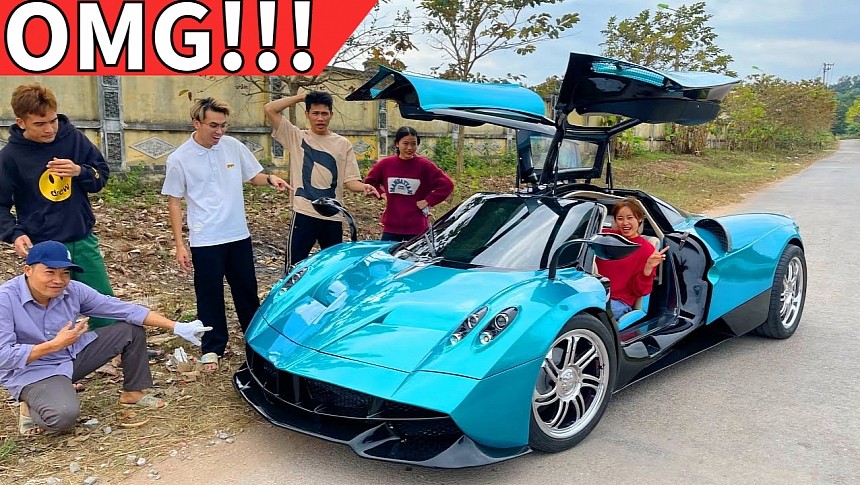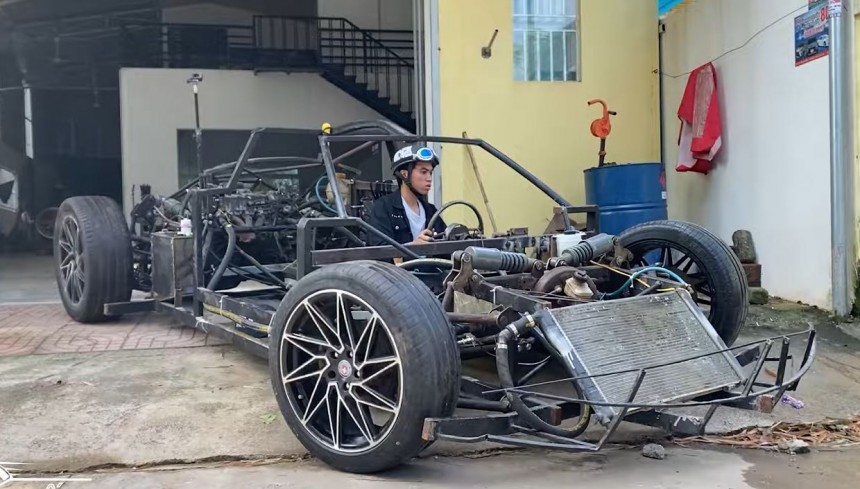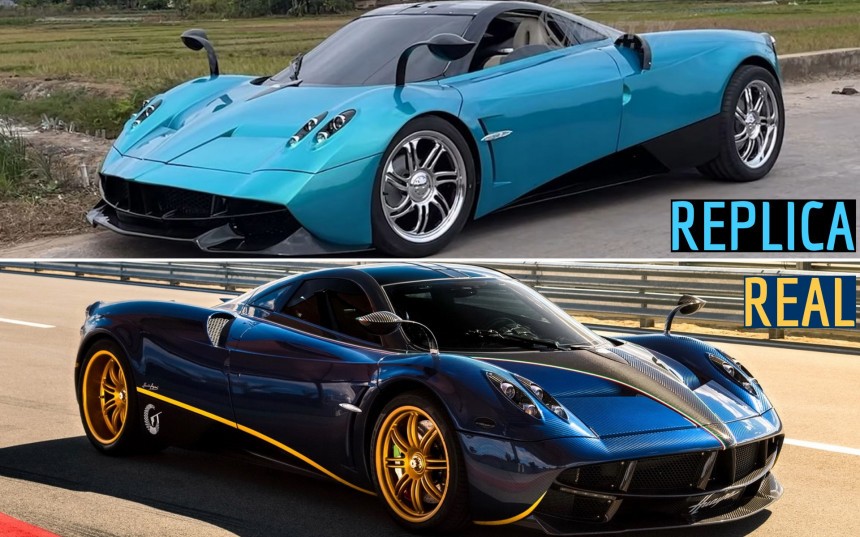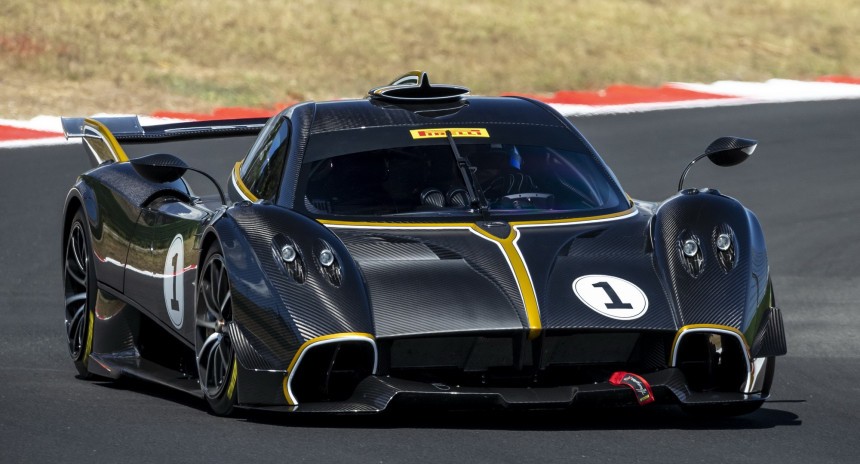It’s very rare that we see a supercar replica that looks just like the real thing. It’s almost unheard of. It’s not like with luxury watches, where the replica market has become so big, you’ll need an industry expert watchmaker to tell the difference between a real Rolex and a high-quality fake.
The same can’t be said about automobiles, which are built on a much larger scale than wristwatches. Cars feature a lot more components, and of course, an engine, which is kind of impossible to replicate – unless you buy the real engine (and transmission) separately and build a replica body around it. That can work too, but you’ll still be lacking in a lot of different departments, like active safety, handling (most likely) and so on.
Let’s not beat around the bush. It’s nearly impossible to build an exact replica of another car, especially when your focus is on Italian exotics. The first thing most replica builders get wrong is the dimensions. Without a CAD scan or at least some manual measurements (which would require access to the real thing), you’ll mess up somewhere, be it the width, length, height, or seating position.
That doesn’t mean we can’t appreciate a solid attempt though, and that’s exactly what we’re looking at here in this video, where a bunch of guys from Vietnam managed to build a super-realistic Pagani Huayra from scratch, and it “only” took them a year and a half.
After watching the entire 47-minute-long video, all I can say is bravo, fellas! You literally build this whole thing using nothing but your wits and a scale model Huayra. They appear to analyze the miniature model from time to time while polishing off the life-size body of the vehicle.
Still, they kicked things off by purchasing an old Daewoo Espero (a four-door mid-size Korean 90s sedan) for just $500. They went on to remove the engine and began assembling the chassis of the faux-Huayra from the ground up. They even built the suspension and the steering rack from scratch.
Unfortunately, we can’t be sure what type of engine they pulled from that Espero, as they came with a wide range of gasoline units (1.5L, 1.8L and 2.0L) - the smaller displacement ones were originally developed by Opel under GM’s tutelage, although technically all of them were manufactured by General Motors, so in a way, this “discount Pagani” is GM-powered.
For example, the wheels and tires aren’t the right size. The wing mirrors are too big, the bodywork isn’t as well rounded (they didn’t have access to high-tech machinery), the panel gaps are a bit too wide (by Pagani standards, otherwise, they seem alright), the rear fascia isn’t exactly how it should be, and so on.
Then there’s the interior, which does somewhat resemble the one used by Pagani for the real Huayra, but the materials aren’t as nice, the build quality is far from acceptable, and the instrumentation is amateurish, at best.
Pagani only made 100 of these beauties, all powered by 6.0-liter twin-turbocharged Mercedes-AMG V12 engines, with outputs of 730 horsepower and 738 lb-ft of torque, originally. Newer specs, like the Huayra Imola, produced as many as 838 horsepower.
In terms of performance, the Huayra could accelerate to 60 mph in about 2.8 seconds, before maxing out at 238 mph. Not quite Bugatti numbers, but still hypercar territory. What’s interesting is that unlike the regular Huayra or the Huayra Imola, the track-only Huayra R doesn’t feature turbocharging on its 6.0L V12 engine, which makes it a whole different beast.
The latest Huayra unveiled by Pagani is the Imola Roadster, which debuted last November. It’s inspired by the Huayra R but uses the twin-turbo Mercedes-AMG V12. This is a limited production vehicle (only 8 units available), and its MSRP could exceed $6 million. Still waiting for an official announcement though.
Shortly after its debut, the Huayra found itself having to also fend off the likes of the Ferrari LaFerrari, Porsche 918 Spyder and McLaren P1, at a time when the hypercar sector began its accelerated growth.
Personally, I think the Pagani Huayra is nothing short of a work of art and should be treated as such.
Let’s not beat around the bush. It’s nearly impossible to build an exact replica of another car, especially when your focus is on Italian exotics. The first thing most replica builders get wrong is the dimensions. Without a CAD scan or at least some manual measurements (which would require access to the real thing), you’ll mess up somewhere, be it the width, length, height, or seating position.
That doesn’t mean we can’t appreciate a solid attempt though, and that’s exactly what we’re looking at here in this video, where a bunch of guys from Vietnam managed to build a super-realistic Pagani Huayra from scratch, and it “only” took them a year and a half.
After watching the entire 47-minute-long video, all I can say is bravo, fellas! You literally build this whole thing using nothing but your wits and a scale model Huayra. They appear to analyze the miniature model from time to time while polishing off the life-size body of the vehicle.
Still, they kicked things off by purchasing an old Daewoo Espero (a four-door mid-size Korean 90s sedan) for just $500. They went on to remove the engine and began assembling the chassis of the faux-Huayra from the ground up. They even built the suspension and the steering rack from scratch.
So, is this a perfect replica?
No, of course not. Even though the overall design is fairly accurate, and might even fool industry experts from a distance, and even though a lot of the details are spot on, like the operational active aero elements and how everything is hinged just right (gull-wing doors, hood, trunk), there are still several details those guys couldn’t exactly replicate.For example, the wheels and tires aren’t the right size. The wing mirrors are too big, the bodywork isn’t as well rounded (they didn’t have access to high-tech machinery), the panel gaps are a bit too wide (by Pagani standards, otherwise, they seem alright), the rear fascia isn’t exactly how it should be, and so on.
I nearly forgot all about the Huayra, how about a reminder?
Sure thing. It’s the mid-engine supercar/hypercar Pagani built to replace the iconic Zonda. It came out in 2011 and went on to win Top Gear magazine’s Hypercar of the Year award in 2012.Pagani only made 100 of these beauties, all powered by 6.0-liter twin-turbocharged Mercedes-AMG V12 engines, with outputs of 730 horsepower and 738 lb-ft of torque, originally. Newer specs, like the Huayra Imola, produced as many as 838 horsepower.
In terms of performance, the Huayra could accelerate to 60 mph in about 2.8 seconds, before maxing out at 238 mph. Not quite Bugatti numbers, but still hypercar territory. What’s interesting is that unlike the regular Huayra or the Huayra Imola, the track-only Huayra R doesn’t feature turbocharging on its 6.0L V12 engine, which makes it a whole different beast.
Original Huayra rivals
When this Italian exotic was first introduced in 2011, it was clear that Horacio Pagani wanted to target the Bugatti Veyron and the Koenigsegg Agera R as far as competitors. He did price the Huayra accordingly (in the millions of dollars range), but performance-wise, it would always prove to be just a step slow compared to the Bugatti or the Koenigsegg.Shortly after its debut, the Huayra found itself having to also fend off the likes of the Ferrari LaFerrari, Porsche 918 Spyder and McLaren P1, at a time when the hypercar sector began its accelerated growth.
Personally, I think the Pagani Huayra is nothing short of a work of art and should be treated as such.
























